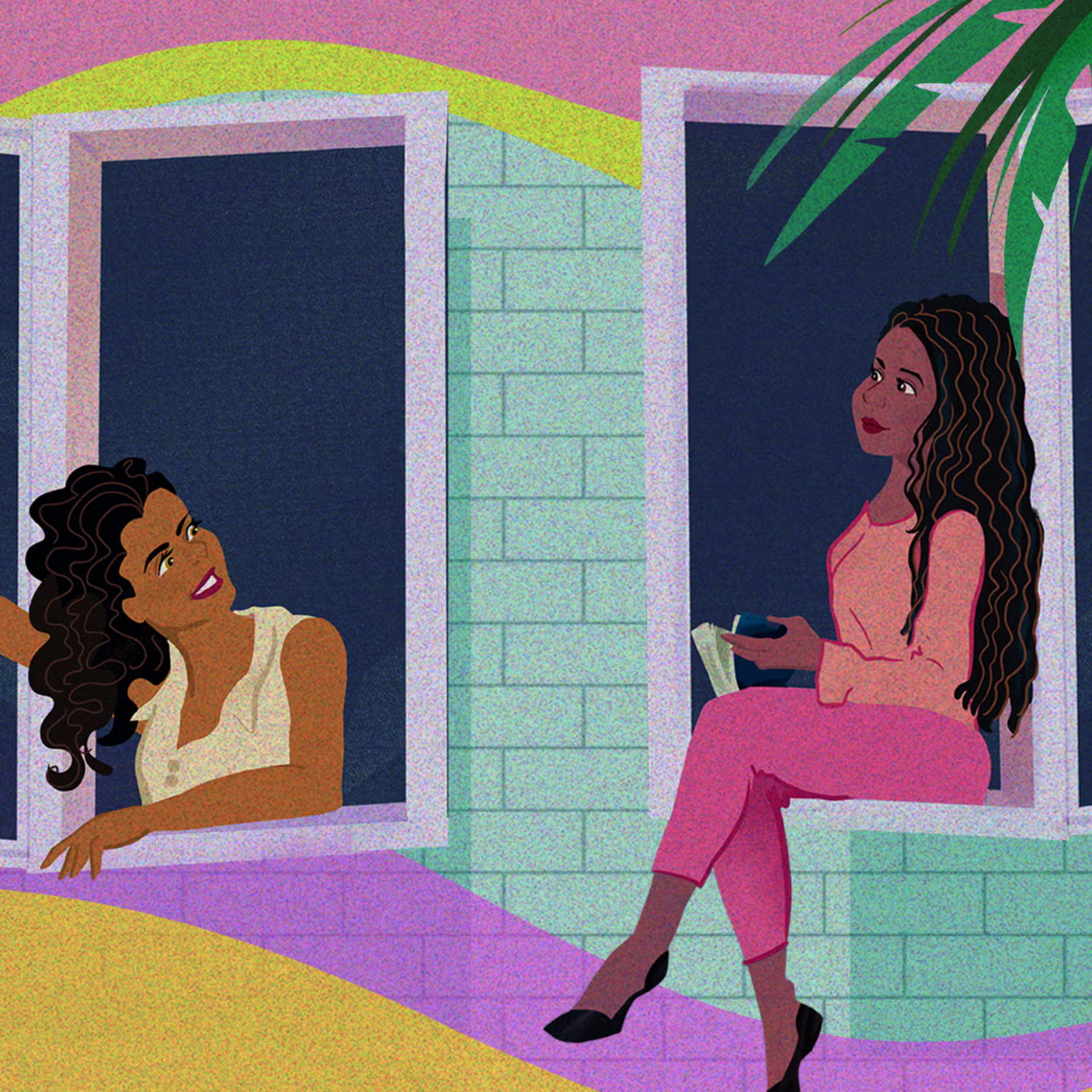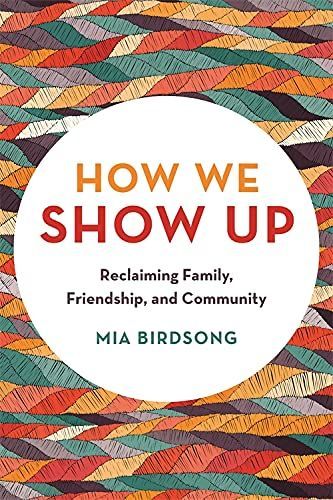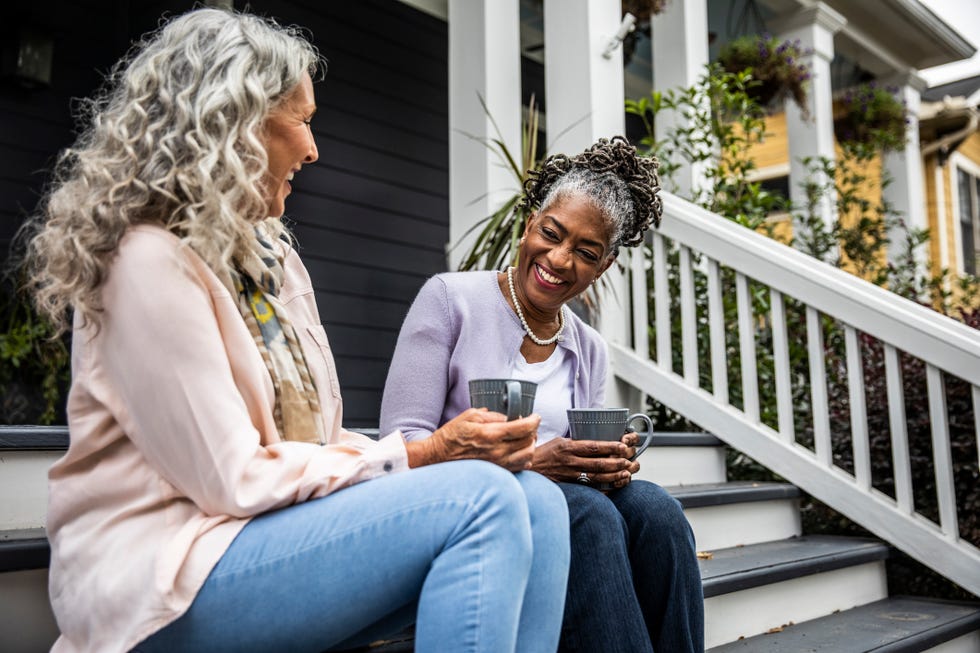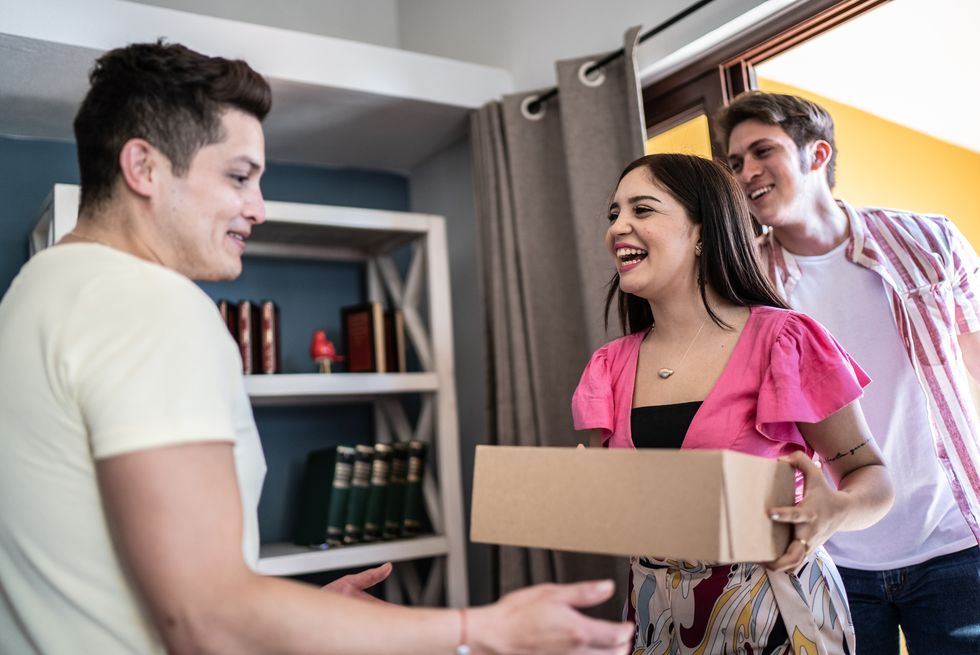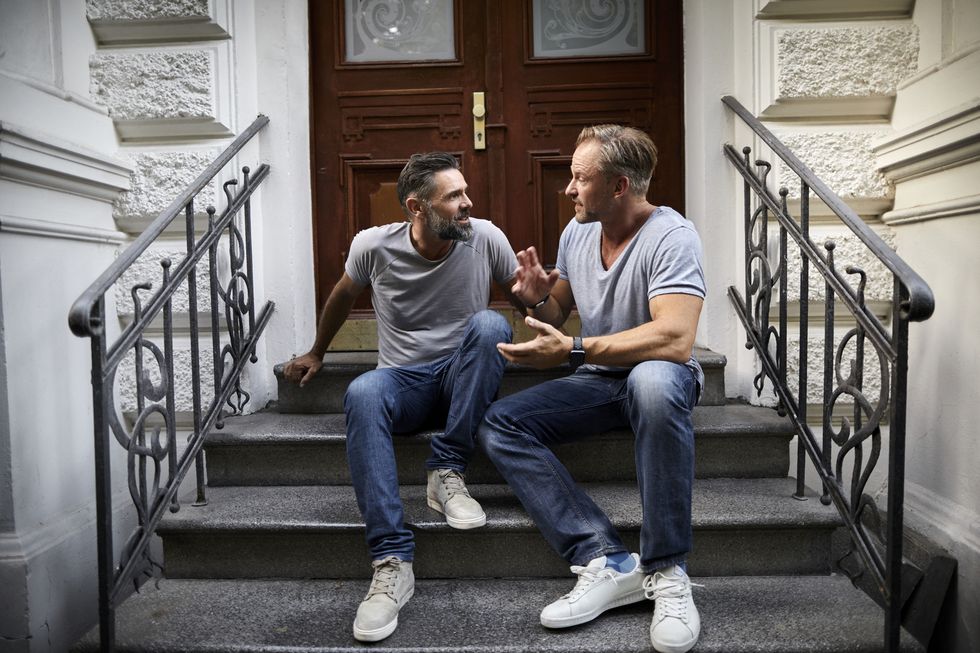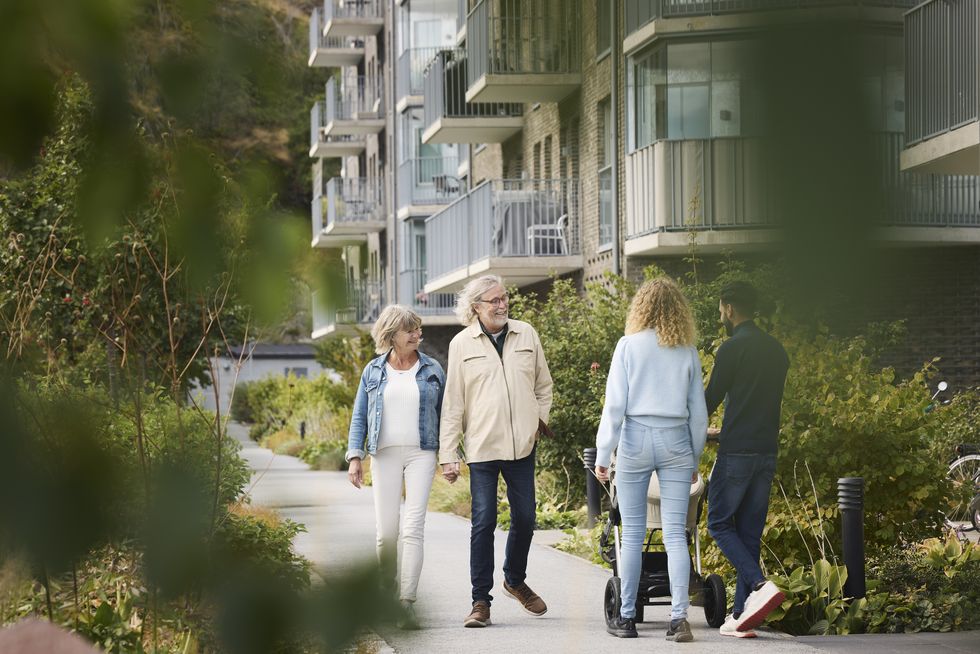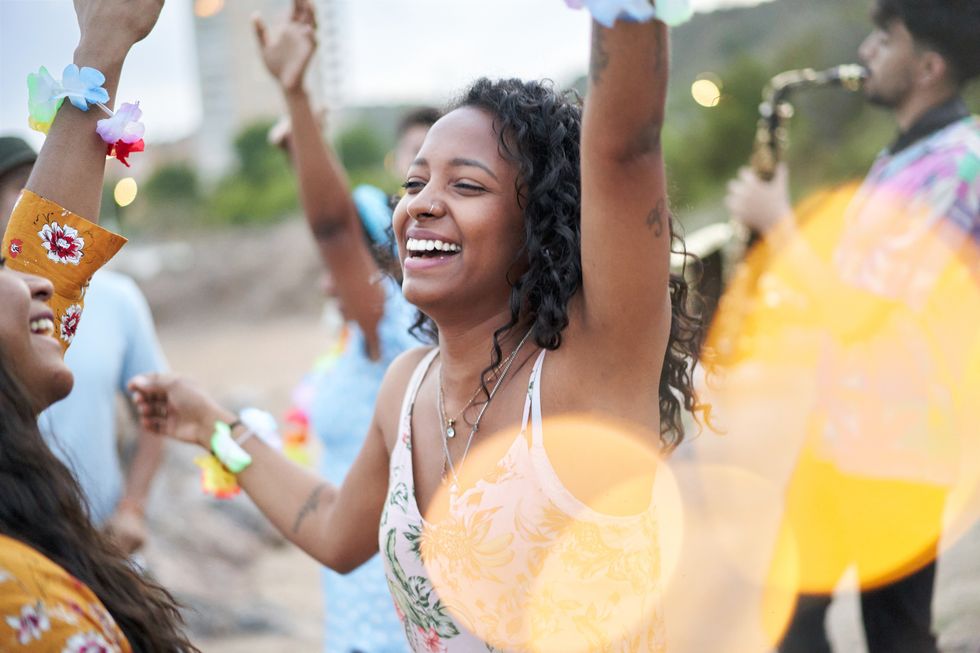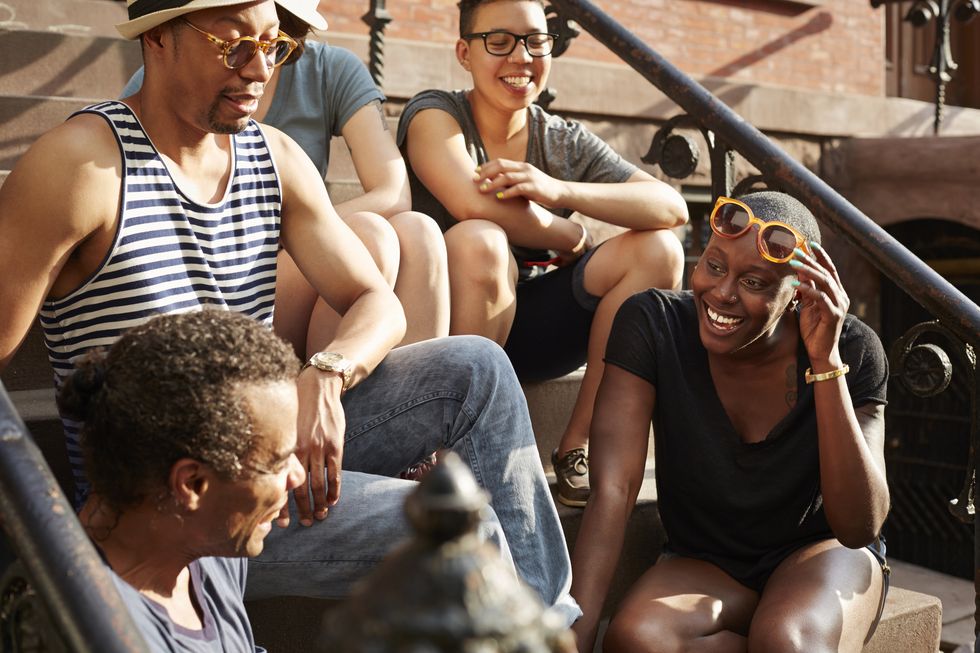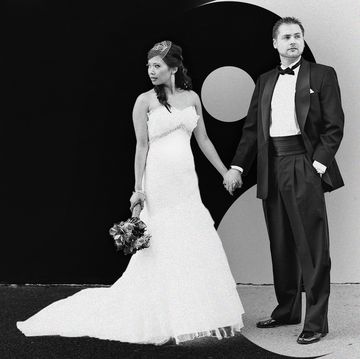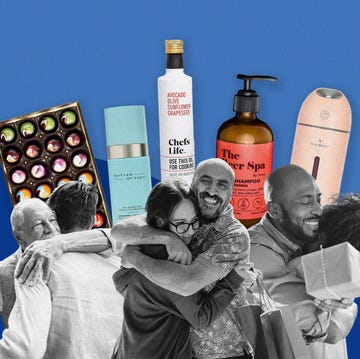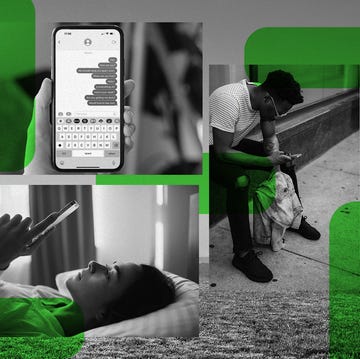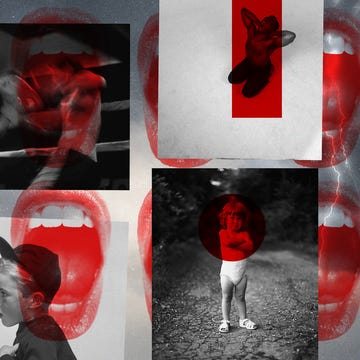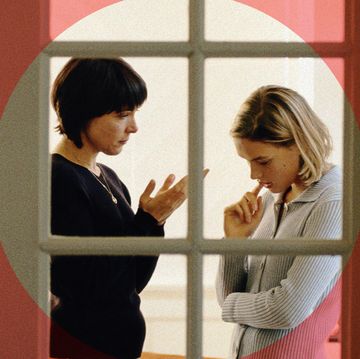Friendships are love stories too. In the Shondaland series The Art of Friendship, we explore and appreciate the beauty and complexities of friendship, as well as what makes it so powerful. From expert tips on how to navigate conflicts and deepen your friendships to uplifting stories of reconnections and advice on making new friends, these stories are reminders of the joy, value, and meaning that companionship brings to our lives.
Danielle Greenly and Taylor Forte met for the first time at Forte’s front door in 2018. “I was like, ‘This girl wants to let us come into her home for no reason,’” recalls Greenly, a 28-year-old occupational therapist. “‘She’s so nice.’”
When Forte heard through a mutual friend that Greenly and her now-husband were looking for a new place to live, the 30-year-old marketing coordinator volunteered to give the home hunters a tour of her and her partner’s apartment and answer any questions. Two months later, the Greenlys moved in. The duo and their husbands became neighbors and — soon after — good friends.
Intermittent dinner invitations turned into frequent game nights, which flourished into random, last-minute texts letting each other know they were stopping by to vent, borrow something, or hang out. “We pretty much always had our doors open,” Greenly reminisces.
The neighbors began spending holidays together, throwing surprise parties, and eventually merged their friend groups. The Fortes fell in love with the Greenlys’ black Labrador, Sadie, and offered to dog-sit whenever they went out of town. “They never wanted us to pay them,” Greenly says. “We’d find other ways and buy them gifts, but they just loved having her.”
After two years of being neighbors, the couples moved in to houses about 15 minutes away from each other. While the “I’m coming over” texts have reverted to occasional dinner invites, the friends are still an important part of each other’s lives. And they’re supporting each other through an entirely new chapter: motherhood.
“Taylor and I were pregnant nine weeks apart from each other,” Greenly says. “We were actually supposed to go to brunch the Sunday morning [Greenly’s son] was born, so I FaceTimed her that morning, like, ‘So, I won’t be needing a ride to brunch.’”
Having a neighbor blossom into a true friend has brought them both joy, and naturally, hardship. Forte lost her dad, and Greenly lost her dog while they were both expecting. “It’s hard,” Forte says. “You’re not right across the street to go over and be comforting.”
While their initial proximity allowed them to quickly build a strong foundation, putting in the effort to be there for each other now that they live farther apart has only made their relationship more meaningful, and it’s taught Greenly a valuable lesson. “Friendships can be easy,” she says. “They can be ‘Come as you are.’ You don’t have to feel like your life is a Pottery Barn catalog just to spend time with people.”
Benefits of knowing your neighbors
There’s something special about being friends with people who can pop over in their pajamas or help out in a pinch — no hosting, table setting, or pressure to be perfect involved. Yet many people shrug off the power of relationships built on proximity and end up feeling physically isolated.
United States Surgeon General Vivek Murthy recently declared loneliness a public health epidemic. His official advisory stated that half of American adults experience loneliness, and that it can be as dangerous as smoking up to 15 cigarettes a day and can shorten one’s life span. According to experts, community gatherings can help stave off loneliness and contribute to a well-rounded and healthier life.
Mia Birdsong, the author of How We Show Up and executive director of culture change lab Next River, is an only child who was raised by a single mother. “I grew up with a lot of chosen family,” Birdsong says. “The American dream [can be] a very isolating story for us. So much of what we think of as what makes us successful and happy is about independence, making it, and doing things on our own.”
Humans are social animals who require community in order to survive. “If we think about what we need in our lives and where we live,” Birdsong explains, “there are multiple communities, and one of those communities is neighbors. It’s an important community because it’s the people who you are in proximity with.”
For those who have shifted to working from home, are unemployed, stay-at-home parents, or marginalized in other ways, this sentiment can be even more true. Pals born out of proximity often get a bad rap, but they can actually be some of the most important relationships we have. “Home is meant to be a sanctuary for us,” Birdsong says. “That extends to the area around our home.”
Safety is an enormous benefit when it comes to befriending neighbors. “Knowing who your neighbors are,” Birdsong says, “and being able to call upon them in moments of crisis is critical. … They are the people who can respond most quickly to anything. If there’s a broader disaster, y’all can pull resources and help each other out.”
Daniel Aldrich, a professor at Purdue University, found that in communities struck by disaster, the more social connection there is, the more likely the community is to survive. “It’s not the communities where the first responders arrive earliest or have the most wealth,” Birdsong says. “It is the communities with the most social connection.”
The same goes for personal crises as well. If a home is burglarized or a fire breaks out, neighbors can help and act more immediately before help arrives. This was the case for Birdsong’s neighbor, whose house caught fire with a child inside. Neighbors came to retrieve him, called the fire department, and alerted the residents of the surrounding homes who weren’t around at the time.
“If someone broke into the front of my home, and I call the cops,” Birdsong says, “the cops would arrive and find a dead body. If I call my neighbors and not just one neighbor, but if I text all of them, they actually can do something that might save my life.”
Convenience is also an advantage of establishing bonds with neighbors. “People really want friends whose house they can just walk to,” says Un-Lonely Planet author and connection coach Jillian Richardson. “It’s so nice to have that.” Whether someone needs to borrow a cup of sugar or a weed wacker, a built-in network could exist.
“There’s something joyful about having the people around you be people that you’re in a relationship with,” Birdsong says. “This does not mean you need to be best friends with your neighbors, but it’s having people who you’re in [a] friendly, regular, familiar relationship with, and you don’t have to do the work of getting to each other.”
As children, it may have seemed easier to become BFFs with someone on your block. A simple hello could lead to yearslong friendships involving sleepovers and playing outside. Despite any modern stigmas, our immediate communities as adults can be just as rich a breeding ground for fulfilling friendships, no matter where you reside. Here are ways to befriend your neighbors.
State your intent
It’s not uncommon for people to reject a social offer because they are unsure of the other person’s motive. When getting to know someone, transparency can be refreshing and reassuring. “Tell on yourself,” Birdsong suggests. “Explain why it is that you’re reaching out.”
Whether you’ve showed up at their front step with baked or locally bought cupcakes, printed out your contact information on a piece of paper and taped it to everyone’s door, or dropped off a book or article on community-building with a note on it, including the context surrounding the outreach can have a powerful impact.
“You can say, ‘I read this article’ or ‘I read this book,’ and ‘I feel like we should know each other in our neighborhood or on our floor,’” Birdsong offers. Start there, and be okay with it feeling a bit awkward at first. “If there’s one person who doesn’t reciprocate, cool — look at all the people who did.”
Open up
On the way to the store, grabbing the mail, or walking the dog, build in extra time to stop and talk with people. Spending just five to 15 minutes talking not only provides a connection that is good for one’s overall well-being, but it can also inform both parties of similarities and commonalities, whether it’s kids, pets, struggles, or interests.
For example, Birdsong’s artist neighbor uses his work as an opportunity to invite people over. “He had a little open house where you could come over and see his piece of art before it goes off,” she recalls. These connections don’t have to take place inside; standing in a hallway or on the sidewalk can be a great place to start.
Going beyond a smile or a wave, greeting with a few details about yourself can go a long way in allowing someone to feel welcome and open up in return, leading to an even deeper relationship. Don’t wait for others to initiate contact. Introduce yourself and who’s in your household. “There’s a relief we feel when that happens,” Birdsong says. “There’s some exhale that happens when we know the people around us.”
Check with mutual friends
For those who are anxious about approaching new people, they can start where they feel most comfortable: current pals. “Ask your friends if they know anyone who lives in the neighborhood,” Richardson says. “You can specifically say, ‘I just want to meet more people who live in my neighborhood.’”
Not only can this be a safer and more encouraging approach, but it may be an exciting opportunity to merge friend groups or get to know someone your loved ones also adore. “Chances are, if it’s a friend of a friend, you’re going to get along.”
Host and attend events
Birdsong recommends inviting neighbors over for a singular, weekly, or monthly “come as you are” kick-back. “[Neighbors] might come by and hang out in my backyard or chat with me on the porch,” Birdsong says. “People are thrilled that the next-door neighbor is going to have a party and [they] don’t have to go very far.”
For those who aren’t the planning type, a great place to meet people is at events that are already organized. Whether it’s an open-mic night or an art class, see what recurring happenings are in the area. “If I was an artist who wanted to make other artists friends in my neighborhood,” Richardson says, “that’s the kind of thing I could go to a few times a month.”
Seeing the same person continually is an important ingredient when building a new relationship. “It could be a meditation community,” Richardson suggests, “a 12-step group, a group for single moms.” Interest groups are an easy place to start because attendees already share something in common and likely live nearby. “Find one thing that genuinely feels pleasurable for you, and start with that.”
Give and ask for help
“Notice your neighbors,” Birdsong advises. If someone has a baby, consider bringing food for the family. When someone moves in, drop off a list of the best takeout places in the neighborhood. More times than not, people love to lend a hand. In fact, research has proved that aiding others reduces stress, improves mood, and increases self-esteem.
Volunteering or asking neighbors to collect mail or packages, walk a pet, or water plants while away can forge a pathway to a relationship. “There’s this mutuality that we end up experiencing,” Birdsong says, “because we all need little things like that.” Offering specific support in the present is helpful, and so is letting someone know your willingness to help whenever something arises in the future.
“When you’re asking for help,” Birdsong says, “communicate with the collective.” A great way to do this is by creating a neighborhood or apartment building group on a text chain or social media group. It can provide what’s needed in a pinch as well as foster further conversation and dialogue. “It’s just a sweet little moment of neighborly connection.”
Make it a group effort
Join forces with one or two neighbors or other people in your household to make it easier to form new neighborly bonds. “It doesn’t have to be a thing that you’re doing by yourself,” Birdsong suggests. In fact, it can be more joyful with others.
“[Ask] who you see the most and would feel most comfortable with, or somebody who also has a dog,” Birdsong says. This collective can take turns reaching out to an individual or inviting a person to join group gatherings to relieve the pressure of one-on-one interactions.
“Relationships are not something where you meet somebody and you become friends and then you don’t have to do any work,” Birdsong says. “Part of it is about how you are trying to include people over the long term, and just not doing that by yourself.”
Don’t give up
When it comes to relationship-building, don’t become disheartened if there aren’t immediate results. “You really need to extend grace to yourself and other people,” Birdsong says. “We don’t live in a society that creates the conditions for relationships to happen easily.”
Lack of time and low energy are elements on both sides of the fence that can interfere with making a strong connection. “It doesn’t mean that you stop making any effort with the people who are less reciprocal,” Birdsong says. “They just might take some more time.”
When feeling discouraged, remind yourself why building these relationships is important to you, then rest and re-engage. “[Remember] what it is you are looking for,” Birdsong says, “and what it is you need and want in your life. It’s not a destination that we arrive at with community. It is a process.”
Mia Brabham is a staff writer at Shondaland. Follow her on Twitter at @hotmessmia.
Get Shondaland directly in your inbox: SUBSCRIBE TODAY
